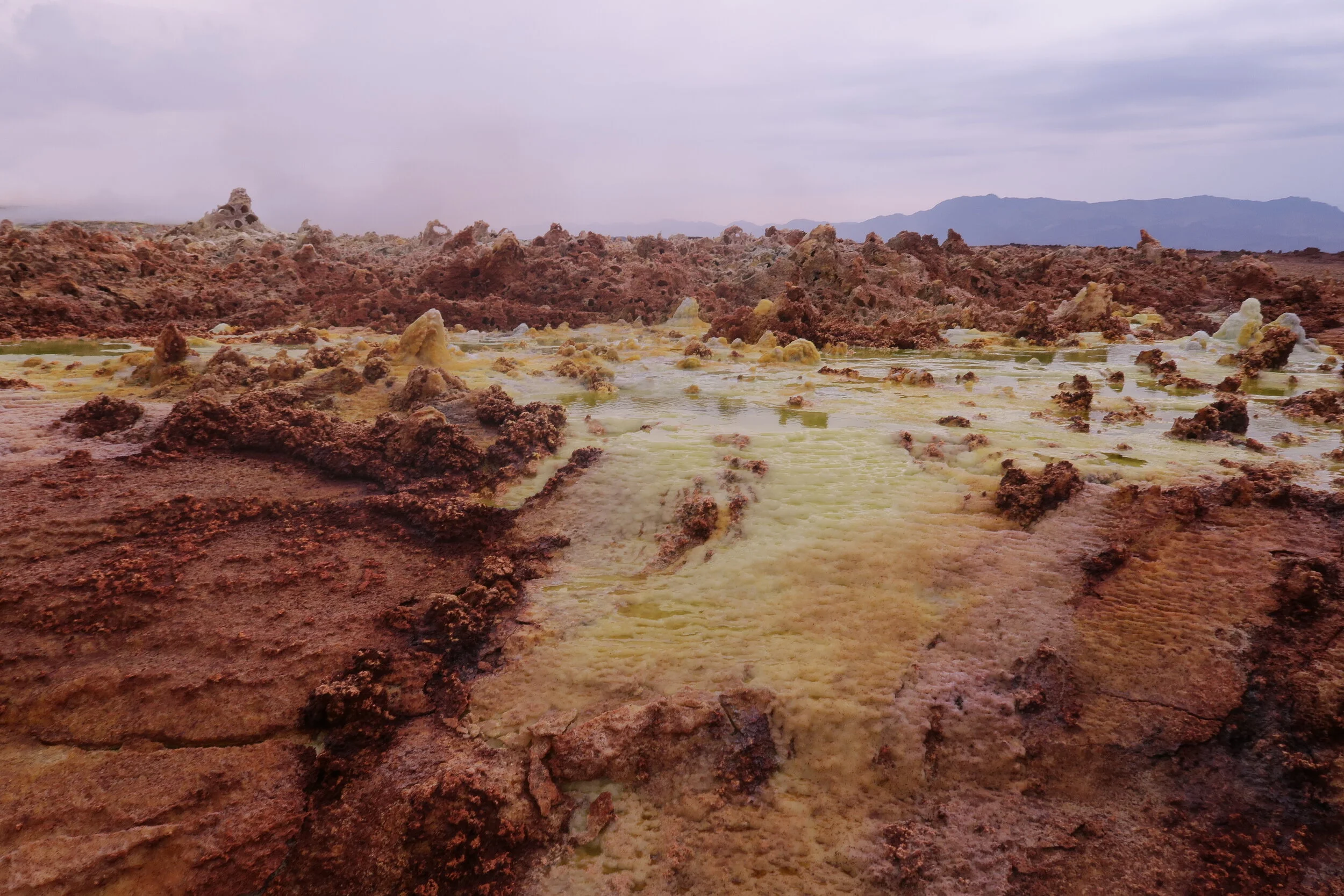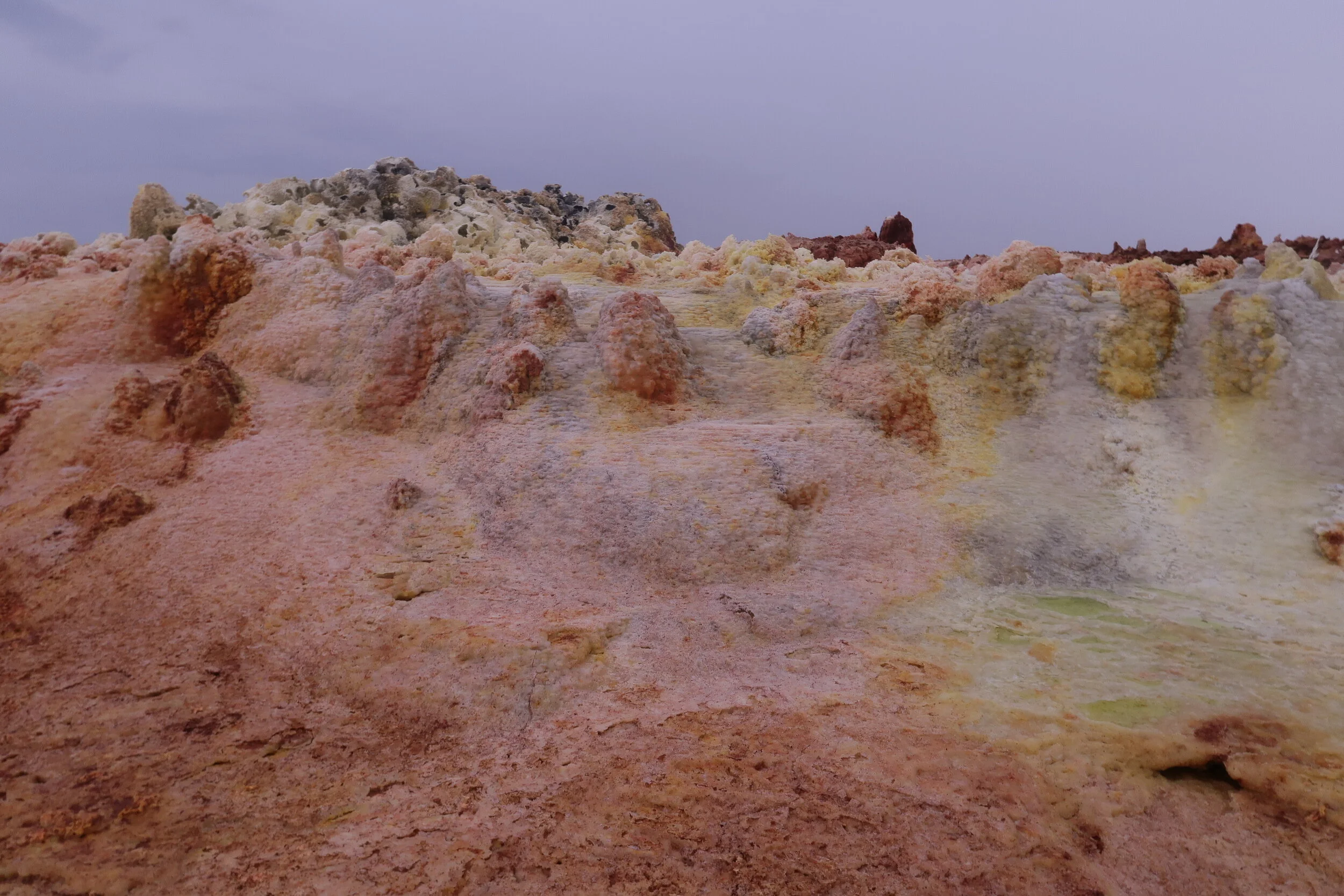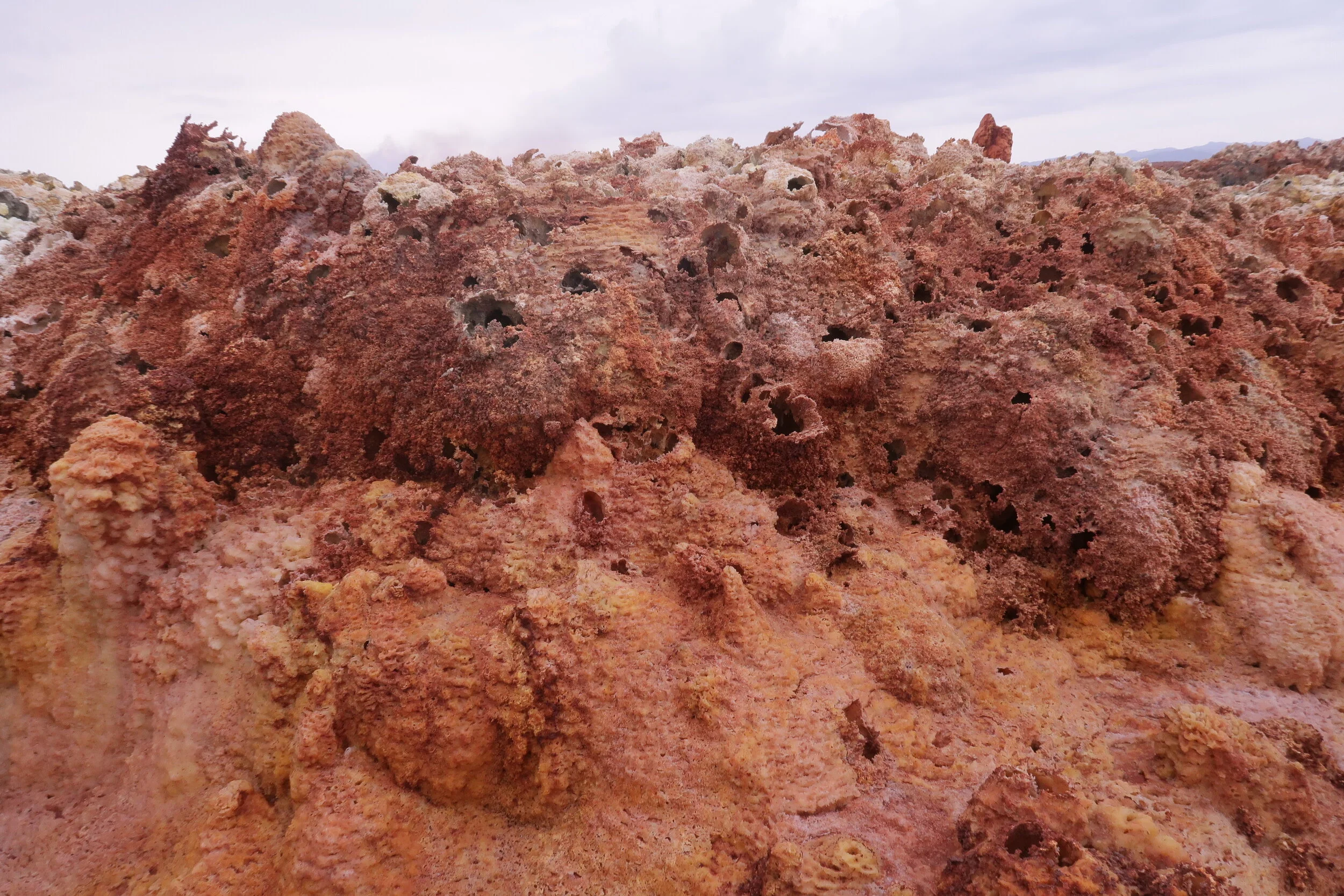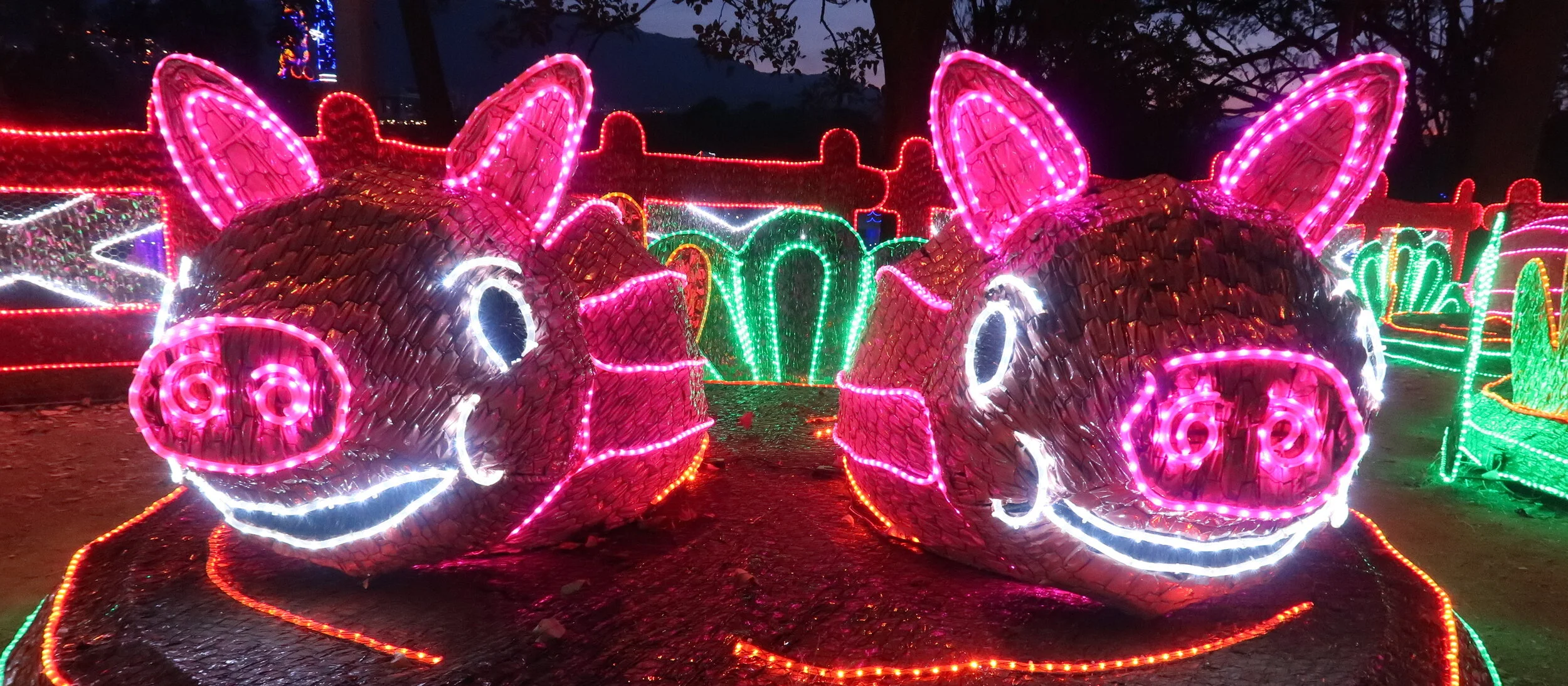They Eat... Danakil Depression
One of our final adventures during our time in Ethiopia was a visit to the northeast into the desert area of the Afar region. Danakil lies about 410 ft below sea level and is one of the hottest places on Earth. It has been described as an alien world and people imagine that this must be what life on Mars is like.
The Afar Region
The word “Afar” means “the best” and there are ~1.3 million locals here. The locals are 99.9% Muslim which means they are not supposed to drink alcohol. Our guides shared that the people do keep beer under the table and drink when no one else is looking.
There is virtually no rain in this region and rains about 7-8 times a year with hard rain for 7-8 hours each time. We were there in September which has 6mm of rain (you will hear later how it rained the night we were there - possibly all 6 mm). For this reason, there is no agriculture and the common food is milk and meat. The life expectancy in this region is 49 years old versus 64 years old in other parts of Ethiopia.
Lake Afrera
Our first stop in Danakil was is a hypersaline lake. It is believed to have a surface area of 39 – 48 square miles. We drove about 30 minutes from the Afar village we would be sleeping at (more on this later). The car stopped near what is basically a hole in the ground. Everyone put on their swimsuits and we slowly went into the “hot tub” one at a time. With close to a 40% salt content, we were floating with ease and had to be careful not to flip upside down. This pool has a higher salt content than most bodies of water in the world, including the Dead Sea. Because it is extremely salty, we were washed off with fresh water after floating and enjoying some beers in it.
Another 10 minute drive later, we were at the very corner of the salt lake where it does actually become liquid. We were still able to walk around on the salt and enjoy the views. The guides poured wine out for everyone and we sat down to enjoy the sunset. The views were breathtaking.
Sleeping Under the Stars
We were warned that the sleeping arrangements would not be great, but we have been camping before so didn’t stress about it that much. When we arrived in the desert, we saw straw bed frames lying around. The staff lined them up next to each other in two rows (imagine a prison block) and then put mattresses (still with its plastic) on top. We were handed sheets and a blanket. By 8:30 – 9:00PM, we had finished dinner and it was pitch black outside. Our wake-up call would be at 4:00AM so we were urged to get rest. At that point, it was ~100 F and you can hear everyone tossing and turning. I was battling some stomach issues with nowhere comfortable nor private to deal with it (“if you need to use the toilet, just walk about 2 minutes out into the desert and stop where you like”). At around 2:00AM, it began to rain on us (literally). I was very happy as the rain cooled down the air, but others were not. The staff urged us to get into the vans and continue our sleep in there. When we were finally up and eating breakfast at 4:30AM, no one had gotten any real sleep. I would like to note that the dinner and breakfast were both really delicious – the cooks did a great job of getting this all together in a minimal “kitchen” that was effectively an empty hut with a portable gas stove.
Dallol
Dallol (means “colorful”) is considered the hottest place on Earth, averaging 50 C = 122 F year round. We drove about 45 minutes to Dallol as the sun was rising. Everyone was told to wear closed-toe shoes as the area has a significantly high concentration of minerals that could kill us. There mineral make up is sulfur, potassium, iron, copper and salt which gives it the different colors. Apparently a few years ago, a woman decided to take a jumping photo right next to the liquids. Her leg went in and she lost it.
Salt Mining
Starting over 1700 years ago, the Afar people began walking 2.5 hours each way from the Hamedela village (where we stayed) to get to the salt mining area. 7-8 kg of salt makes an average of 5 birr and each person is able to make a maximum of 300 birr per day. Most of the salt miners have 30 children and the income made is for the entire family’s survival. There are miners who also come from the highlands (Mekele) and they take 8-9 hours to arrive using camels. They can then sell the sale for 75 birr (instead of 5) back home, but you can imagine that the expense and transportation is high for them. The miners begin at 17-18 years old until they can no longer handle the physical labor.
Two or Three Day Tour
We booked our tour through Inside Ethiopia. Tours leave from Mekele on a daily basis and it takes about 5 hours on well-paved roads to get to Danakil. We went for 2 days / 1 night, but the rest of our group had chosen 3 days / 2 nights. On the day we left, they drove another 5-6 hours to get to a volcano where they would sleep at the base of. From what we understand, the volcano is filled with black smoke for the most part and there is little to no visibility. We suggest you do some research before committing to that extra night given there are no bathroom facilities and extremely hot weather to contend with.




























